
Laurent and Sylvie de Bosregard.
I also learned about Celtic holy places in the Dordogne -- and about my own magic powers!
But first let me share with you something about the first discovery: the ambrosia of Belingard!
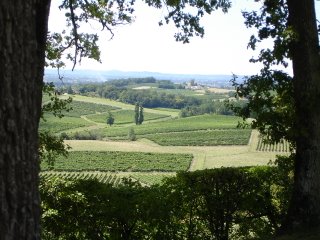 Three thousand years ago the Celts came to this spot and called it "The Garden of the Gods" -- or Belen-Gaard. Today it is simply called Belingard-- the home of Laurent and Sylvie de Bosredon, and the estate where the three thousand year tradition of wine making is continued and some of the best wines of the region are produced -- still good enough to be fit for the gods!
Three thousand years ago the Celts came to this spot and called it "The Garden of the Gods" -- or Belen-Gaard. Today it is simply called Belingard-- the home of Laurent and Sylvie de Bosredon, and the estate where the three thousand year tradition of wine making is continued and some of the best wines of the region are produced -- still good enough to be fit for the gods!There are many many wine estates in this area -- after all, we are in THE wine area of THE wine country of the world. There are also many estates where one can go and taste the wines of the estate and, if that is your wish, buy a few bottles to take home. All round a pleasurable way to spend a leisurely afternoon. But --- there are not too many places where the owner and his wife are as charming, as knowledgeable, as welcoming (and as fluent in English) as this particular couple and where they personally give you a fascinating little tour and lecture on the estate -- which has been in the same family for over two hundred years - and where wine has been produced non-stop for the last 3000 years! - and then personally conduct the best, most interesting and most complete and informative wine tasting session I have ever attended. An entire afternoon of pure pleasure!
The hill on which the Belingard Chateau proudly stands in a circle of giant oak trees, was discovered thousands of years ago to be a 'ley', or a 'bridge' where the energy fields of the earth and of the cosmos are the strongest and make contact. If you have any skeptical thoughts about the veracity of this statement, the claim is reinforced by the presence of a sculpted rock on this site (which has a magical horizon that can leave no one indifferent, whether you believe the story or not!), which served as an altar of sacrifice used by the Druids some 3,000 years ago.
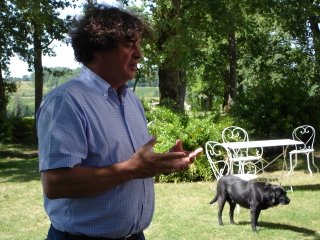 The Count Laurent de Bosredon's enthusiastic and colourful account of the Celts, and the young virgins and druid apprentices -- of the Hundred Years war and the Plantagenet in the Aquitaine, and soldiers consumed by the Celtic god, Beleen or Belin, is only matched by his obvious passion for his land and his wine -- when he speaks of the different grape varieties, methods of wine making, the secrets of the land and the soil and the terrain, harvests and plantings and vines, then he becomes an historian, a story teller, a poet -- and a druid himself.
The Count Laurent de Bosredon's enthusiastic and colourful account of the Celts, and the young virgins and druid apprentices -- of the Hundred Years war and the Plantagenet in the Aquitaine, and soldiers consumed by the Celtic god, Beleen or Belin, is only matched by his obvious passion for his land and his wine -- when he speaks of the different grape varieties, methods of wine making, the secrets of the land and the soil and the terrain, harvests and plantings and vines, then he becomes an historian, a story teller, a poet -- and a druid himself.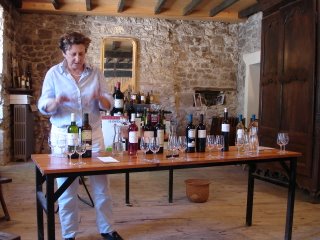 And then there is Sylvie who organises and directs and with her sharp mind and quick sense of humour makes sure that everything runs smoothly, that everyone is looked after and that no one leaves without the magic of a big smile!
And then there is Sylvie who organises and directs and with her sharp mind and quick sense of humour makes sure that everything runs smoothly, that everyone is looked after and that no one leaves without the magic of a big smile!Château Bélingard was already well ranked in the 1903 édition of Féret’s "Bergerac et ses vins", with 100 barrels of red wine and 50 of white wine. In the 1994 edition, it is still the leading wine producer of the famous Monbazillac and Bergerac appellations, and today they can proudly boast some of the very best wines that France has to offer.
The product range can be presented as follows:
• Château Bélingard : from the blend of the different grape varieties present on the estate, these wines are very typical of the Bergerac and Monbazillac appellations.
• The "Alliance" vintage of Château Bélingard results from the association of the traditional practices of our great lands with modern technology, as implemented by the winemakers of the New World. These wines are deliciously supple with a hint of wood.
• The wines of the "Blanche de Bosredon" vintage of Château Bélingard, the core of the estate’s production, are the result of a rigorous selection of grape varieties and ageing in French oak barrels.
• "Ortus" of Château Bélingard can only be found in the Côtes de Bergerac Red Appellation . It comes from a strict grape selection and is always aged in new barrels. A superb wine.
• "Lyvress" of Château Belingard : Premium Dry White Wine -- a delightfully different and delicious wine in an elegant slim bottle.
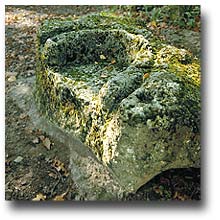 Ley lines are alleged alignments of ancient sites or holy places, such as stone circles, standing stones, cairns, and churches. The ley-line system exists as an independent circuitry with the capacity to affect consciousness and are part of the earth's energy system. Monuments serve to reveal or mark the network, making the sites more special by connecting and networking them together. Ley, as a word, is akin to leoht (light illumination) and Middle English lea meaning "pasture land, a meadow which is open to the sun and therefore, at times, drenched with light." This connection of the word ley with light is significant on several levels. Physically, the clearing of tracks through the forest lights the way and marks the "ley of the land." The word ley is also related to ley, lee and lay. This etymological sequence describes a sort of cosmic roadway system upon which people traveled in pre-Renaissance times. First, lines were delineated by cleared hilltop notches (ley), then woodland through which the ley line passed was cleared (lay), and then the fields which domesticated the landscape were cleared (lee) with the names ley, lay, and lee applying to each stage of ley landscape development.
Ley lines are alleged alignments of ancient sites or holy places, such as stone circles, standing stones, cairns, and churches. The ley-line system exists as an independent circuitry with the capacity to affect consciousness and are part of the earth's energy system. Monuments serve to reveal or mark the network, making the sites more special by connecting and networking them together. Ley, as a word, is akin to leoht (light illumination) and Middle English lea meaning "pasture land, a meadow which is open to the sun and therefore, at times, drenched with light." This connection of the word ley with light is significant on several levels. Physically, the clearing of tracks through the forest lights the way and marks the "ley of the land." The word ley is also related to ley, lee and lay. This etymological sequence describes a sort of cosmic roadway system upon which people traveled in pre-Renaissance times. First, lines were delineated by cleared hilltop notches (ley), then woodland through which the ley line passed was cleared (lay), and then the fields which domesticated the landscape were cleared (lee) with the names ley, lay, and lee applying to each stage of ley landscape development. 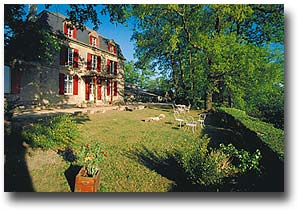
Visualize mounded tree groves -- uisually oak trees as they form a perfect 'bridge' between land and sky with their deep roots and high strong branches -- on ley lines and a grove of trees on the ley lightway, filled with sacred cosmic light. Imagine standing on a hilltop at dusk, seeing an aura of lighted lines passing through earthworks and stone circles, with darkened groves of trees glowing with soft light. A magical mystery tour!
Ley lines and light are very closely related. Ley lines are cosmic forces originating outside of the Earth. They penetrate and leave the Earth vertically at nodes. The penetrating nodes are called power centers. The average length of a ley line is twenty to thirty miles, although the length can vary from only a few feet to thousands of miles. The width of the line varies, but the average is 5-1/2 feet, the width of the Roman road. The horizontally traveling ley line exits the Earth by again turning 90 degrees and passing straight through the center of the Earth and coming out the other side.
And my magic powers? Well -- since I was little I have been a water diviner and could, with the help of a forked stick point out where, how deep and how strong water lines under the earth are. Growing up on the dry continent of Africa, this gift proved very useful and made me feel quite important at times -- although never made a big fuss of. But it was only when I researched 'ley lines' that I discovered that this means that I can also point out ley lines, allignments of holy sites and magic places! Whether I like to be called a "dowser", is another matter altogether........
Dowsing deuten, to declare, douse, to plunge) refers to techniques for finding water or other things by using a dowsing instrument, such as a dowsing rod. The use of the dowsing rod, a Y-shaped forked stick or rod used to find water and hidden objects is probably as old as humankind. The dowsing rod is still is used commercially by many well-drillers and contractors who have to dig around underground pipes and lines. A good dowser/well-driller can find good, pure water 95% of the time.
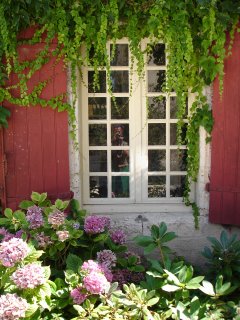 Château Bélingard is open to visitors, whether they be novices or connoisseurs, simple tourists or wine buffs.
Château Bélingard is open to visitors, whether they be novices or connoisseurs, simple tourists or wine buffs. Normal opening hours are from 8 a.m. to 6 p.m., Monday to Friday, and from 10.30 a.m. to 6 p.m. on Saturday, by appointment, by calling : (33) 553 58 28 03 or by E-mail at
laurent.debosredon@wanadoo.fr
Click on Link:
Chateau Lalinde : The perfect venue for your event
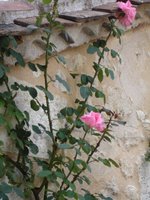
TAGS: Events Rent a chateau France
Chateau
Perigord Food Holidays in France Recipes



